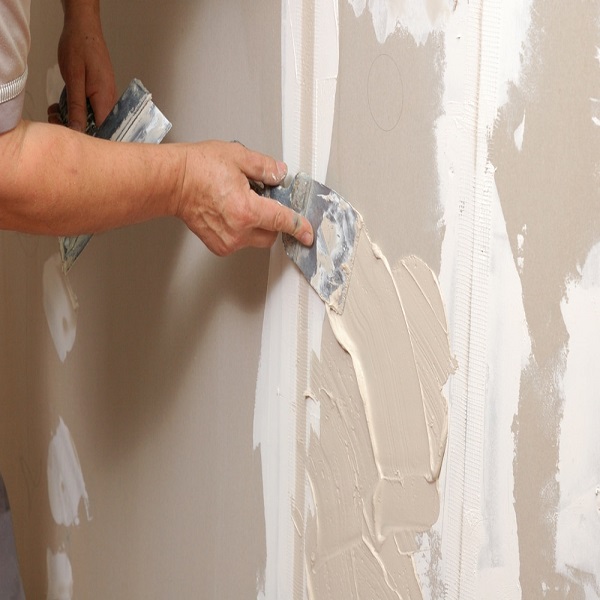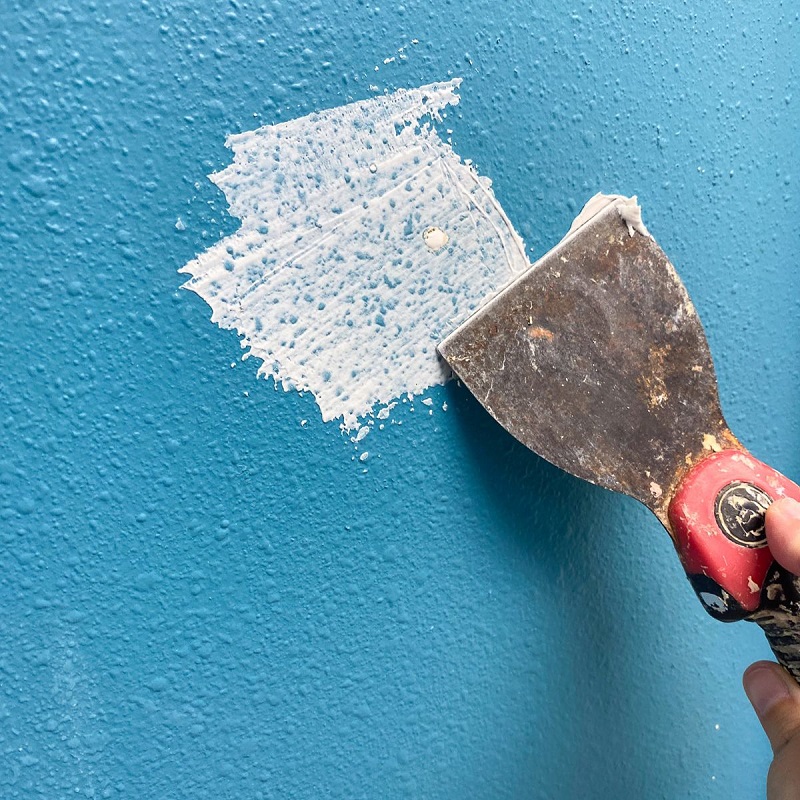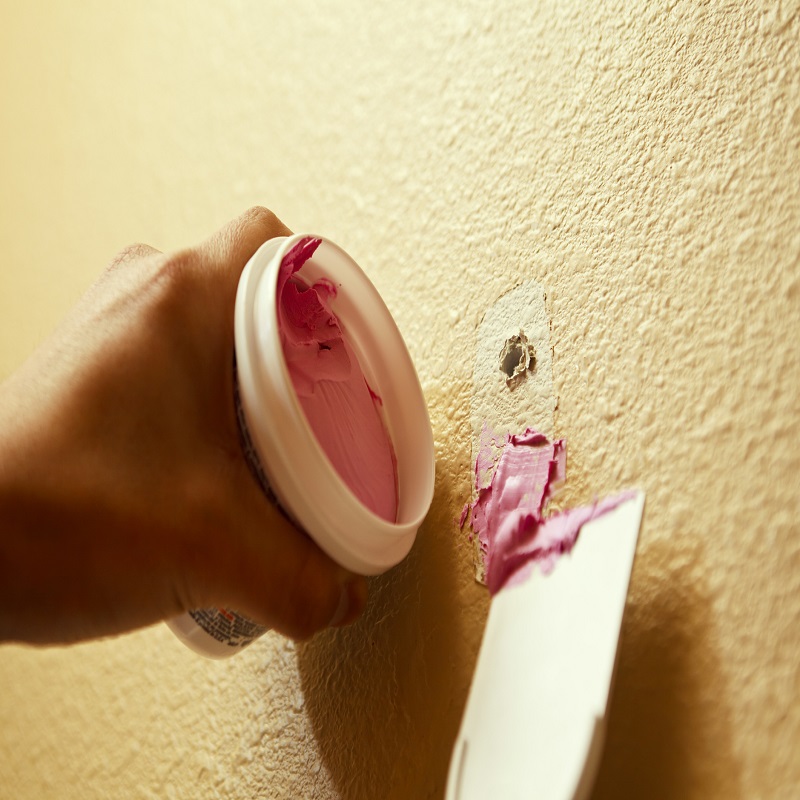Over time, walls may become damaged or marked, wall paint repair and restoration to maintain a clean and fresh appearance in our homes. Wall paint repair is a common task that can be tackled with the right techniques and tools. In this article, we will explore various methods for repairing wall paint, including patching holes and cracks, fixing paint chips, blending mismatched paint, and touch-up painting. These methods will help you restore the beauty of your walls and ensure a seamless and professional finish.

Patching Holes and Cracks:
One common issue in wall paint repair is patching holes and cracks. To repair small holes, use a putty knife to apply spackling compound or hole filler to fill the hole. Allow it to dry, then sand it smooth using fine-grit sandpaper. For larger holes or cracks, consider using a drywall patch. Place the patch over the damaged area and secure it with joint compound. Finish by sanding and smoothing the patched area before repainting.
Fixing Paint Chips:
Paint chips can detract from the appearance of your walls. To fix small paint chips, start by cleaning the damaged area with a damp cloth. Then, use fine-grit sandpaper to smooth the edges around the chip. Apply a coat of primer to the chipped area, and once it dries, use a small brush to carefully touch up the paint to match the surrounding wall. For larger paint chips, you may need to repaint the entire wall section to achieve a consistent finish.
Blending Mismatched Paint:
When touching up paint, it is essential to ensure that the color matches the existing garage wall paint. To achieve a seamless finish, start by visually assessing the color and finish of the existing paint. If you have the original paint can or swatch, take it to a paint store for color matching. Alternatively, you can try painting a small test patch on an inconspicuous area of the wall and compare it to the surrounding paint to check for color and sheen match. Adjust the color by adding small amounts of tint until the desired match is achieved.
Touch-up Painting:
Touch-up painting involves blending the repaired area with the surrounding wall for a seamless finish. It is important to use the correct paint and application technique to achieve a consistent appearance. Start by cleaning the area to be touched up with mild soap and water, then allow it to dry completely. Use a small brush or a touch-up roller to apply the paint, feathering the edges into the surrounding area. Apply multiple thin coats, allowing each coat to dry before adding the next, until the touch-up area matches the rest of the wall.

Camouflaging with Textures:
In some cases, wall imperfections can be camouflaged by adding texture to the repaired area. This can be achieved using techniques such as stippling, sponging, or rag rolling. Apply a small amount of joint compound or texture medium to the area to be repaired, then use a brush, sponge, or rag to create the desired texture. Allow it to dry, then prime and paint the textured area to match the rest of the wall. This method is particularly useful for hiding larger repairs or uneven surfaces.
Professional Help:
For more extensive wall damage or if you lack the necessary skills and confidence to perform the repairs yourself, it may be advisable to seek professional help. Professional painters or contractors have the expertise, tools, and materials to handle complex wall paint repairs, ensuring a high-quality finish and saving you time and potential frustration.
Advantages of wall paint repair
Maintaining the appearance and condition of painted walls is essential for creating a beautiful and well-maintained environment in our homes or office spaces. Wall paint repair, including touch-ups, fixing chips, and addressing imperfections, offers numerous advantages. It allows homeowners to restore the visual appeal of their walls, maintain the value of their property, and create a clean and polished atmosphere.
Prolonging the Life of Paint:
Regular wall paint repair helps to prolong the life of the existing paint job. By addressing small issues such as touch-ups, chips, or cracks in a timely manner, homeowners can prevent further damage and maintain the integrity of the painted surface. This not only improves the appearance of the walls but also extends the lifespan of the paint, reducing the need for a complete repaint in the future.

Enhancing Aesthetics:
Wall paint repair significantly enhances the aesthetics of a space. By addressing imperfections, such as peeling or chipped paint, discolored spots, or patched areas, homeowners can achieve a visually appealing and seamless finish. A well-maintained wall with repaired paint contributes to a cleaner and more inviting atmosphere, making the room or space more enjoyable for occupants and visitors alike.
Improving Property Value:
Wall paint repair plays a vital role in improving the overall value of a property. When potential buyers or tenants enter a space, they immediately take note of the condition of the walls. Well-maintained paint reflects a sense of care and consideration for the property. By regularly addressing any paint issues, homeowners can position their property in a more favorable light, attracting potential buyers or renters and potentially increasing its market value.
Cost-effectiveness:
Addressing wall paint design issues promptly is more cost-effective than letting them worsen over time. Small touch-ups or repairs require minimal time, effort, and materials, compared to larger-scale repainting or extensive wall repairs. By regularly maintaining the paint on the walls, homeowners can save on future expenses by avoiding costly repairs or complete repainting projects.
Promoting Pride in Your Surroundings:
Taking the time to repair wall paint promotes a sense of pride and ownership in your surroundings. A well-maintained space reflects attention to detail and care, creating a positive environment that can positively impact mood and productivity. By investing time and effort into wall paint repair, homeowners can enjoy a living space that inspires feelings of pride and satisfaction.
Preventing Further Damage:
Addressing wall paint issues promptly helps prevent further damage to surfaces and structures. Small chips or cracks in the paint can allow moisture or pests to penetrate the walls, leading to more significant issues such as mold growth or structural damage. Regular paint repair serves as a protective barrier, preventing further deterioration and potential costly repairs down the line.
Personalization and Style Upgrades:
Wall paint repair provides an opportunity to bring personalization and style upgrades to a space. It allows for the introduction of new paint colors, accent walls, or decorative techniques that can revitalize and transform the look and feel of a room. Updating the paint allows homeowners to express their creativity and keep up with current design trends, making their space feel fresh and modern.

Conclusion:
Wall paint repair is a skill that can help maintain the appearance and integrity of your walls. Whether it involves patching holes, fixing paint chips, or blending mismatched paint, these methods allow you to restore the beauty of your walls and achieve a seamless finish. By following the appropriate techniques and using the right tools and materials, you can successfully repair your paint for garage walls and enjoy a fresh and appealing living environment. Remember to take your time, practice on inconspicuous areas if needed, and seek professional assistance if the damage is extensive. With patience and care, you can achieve professional-looking results and extend the life of your painted walls.
